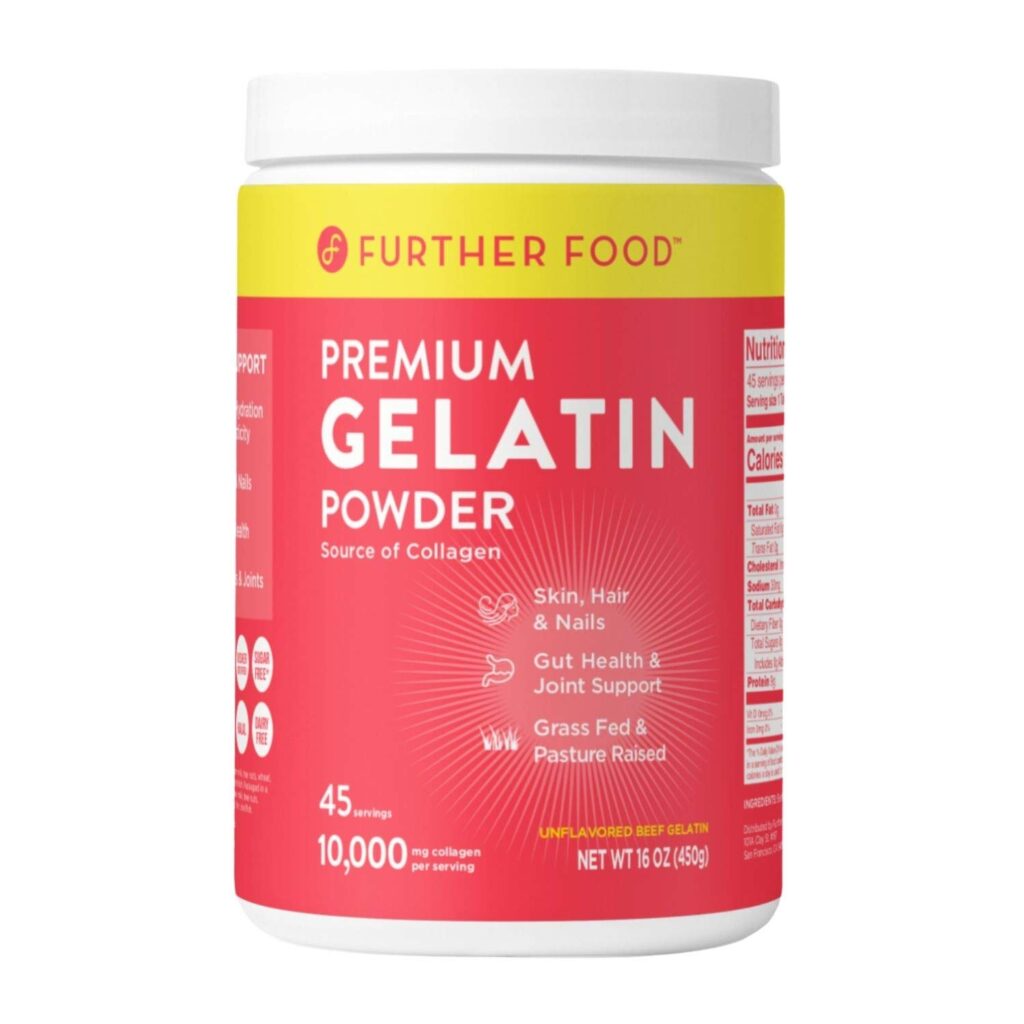

The skin becomes less firm, and wrinkles and lines may develop.Įating gelatin may help boost collagen levels and support skin elasticity. Skin careĬollagen helps maintain the elasticity of the skin. However, the study looked at supplementation rather than dietary intake.Įxactly how much protein do we need? Find out here. Support the proper function of various organs.Ī 2017 study suggests that a supplement combining vitamin C and gelatin may help repair body tissues in athletes and prevent tissue damage.This means that, on average, protein should account for 10–35% of a person’s daily calorie intake. The Dietary Guidelines for Americans 2020–2025 recommend that adults consume 46–56 g of protein each day, depending on their age and sex. Protein is a macronutrient, which means that the body needs significant amounts to function. In its purest, powdered form, gelatin has a high protein content. This kills the enzyme, allowing the gelatine to set as usual.įor more decadent desserts, check out our Cheesecake recipes collection.Gelatin may provide a number of health benefits. Combat this problem by completely heating the fruit first. Some varieties of fruit, such as pineapple and kiwifruit, and roots like fresh ginger, contain an enzyme called bromelain that can prevent gelatine for setting.Gelatine has an almost indefinite shelf life so a single purchase can last a long time.Pour into the mould and quickly place in the fridge to finish the setting process. Alternatively, place the finished liquid into a metal bowl over an ice bath and stir constantly until it begins to set. If you need to speed up the setting process, simply place the mould in the freezer to chill before use.After 24 hours gelatine can’t set any further. Set gelatine dishes in the fridge for at least eight hours, preferably 24.If you use hot water the particles will swell on the outside, preventing the water from getting into the centre, and creating a grainy texture in your final dish. Powder gelatine needs to be dissolved in cold water.If this poses a problem agar-agar, a plant based gum, can be used in its place. For this reason, adding it to food can make it non-Kosher, Halal, or inappropriate for vegetarians and vegans. Gelatine is derived from the collagen found in animal skin, bones and meat.Once it has melted, remove from the heat and add to the cold ingredients, stirring well to ensure it is well incorporated. Stir it once or twice to ensure it doesn’t stick to the pan. Allow the gelatine to slowly melt, approximately 30 seconds. Simply place it in a saucepan over a gentle heat. If the gelatine needs to be added to a cold liquid, you will need to melt it. If the gelatine is to be used in a hot liquid, simply add it now, and stir to ensure it completely dissolves. Remove from the now pliable sheets from the water and squeeze out the excess liquid. Soak the required leaves in cold water for at least 4 minutes to soften the gelatine and allow it to easily dissolve. Strain the gelatine into the liquid that needs to be set.

Don’t take the gelatine off the heat until all the granules have dissolved. If any undissolved granules stick to the spoon it needs a little longer. Test the gelatine by dipping a spoon into the liquid. Leave until the gelatine has completely dissolved and turned transparent, approximately 5 minutes.


Place the bowl in a pan of barely simmering water. Sprinkle the powdered gelatine over the liquid and stir until the gelatine is fully incorporated. Place 3 tablespoons of water, or 3 tablespoons of the liquid that needs to be set, into a small heatproof bowl.


 0 kommentar(er)
0 kommentar(er)
